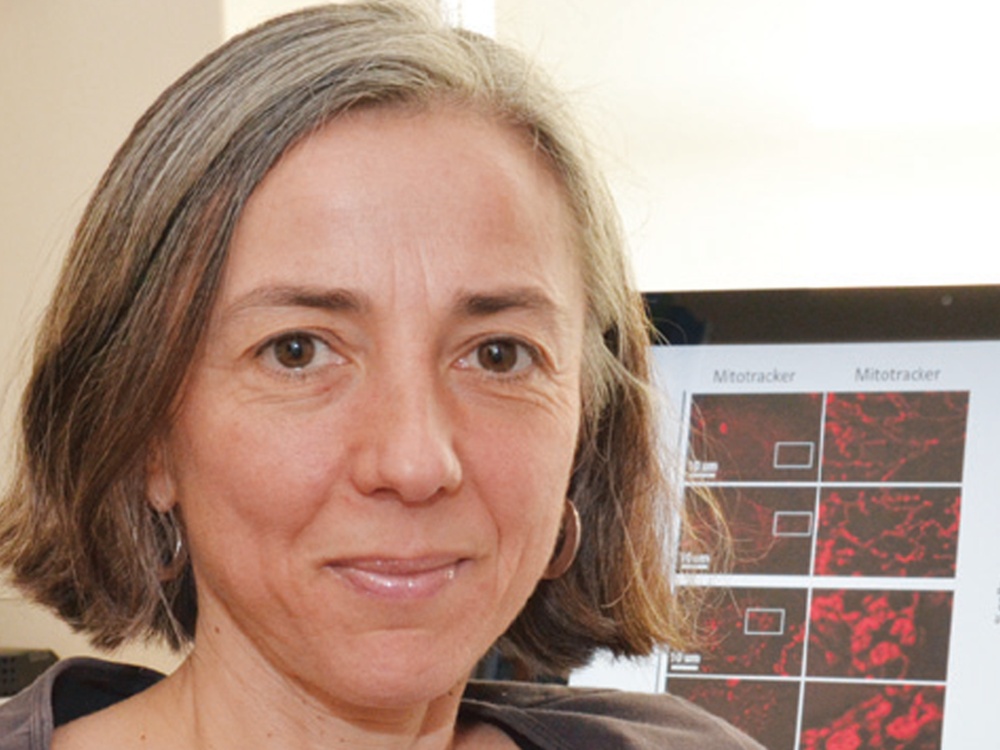Antonella Spinazzola is Professor of Neuroscience and Mitochondrial Medicine at UCL Queen Square Institute of Neurology. Over her 20-year career studying mitochondrial disorders, she’s made significant contributions to the field, from identifying disease-causing genes and mechanisms to researching potential therapies.
Her study on using 2-Deoxyglucose (2-DG) to restore mitochondrial function, published last year in Nature Communications, has advanced the prospect of effective treatments for mitochondrial disease patients. We caught up with Antonella to discuss the inspiration behind her work and her hopes for finding a cure.
How did you come to dedicate your life to mitochondrial research?
Growing up in a small village in Italy, I knew I wanted to be a doctor and a scientist. I dreamt of living and working in New York, but my journey began in Rome, where I attended medical school and, as a neurologist in training, started working on neuromuscular disorders.
Most of my patients were children or young adults with rare genetic diseases, and the lack of diagnosis and treatment options was frustrating. This motivated me to pursue research. After completing my training, I moved to New York to study mitochondrial disorders at Columbia University, which hosted one of the leading laboratories in this field.
You discovered the first gene known to cause mitochondrial disease while in New York. Was that a significant moment for you?
Absolutely. The discovery was incredible, and working in such a passionate environment solidified my commitment to this research. Identifying specific types of mitochondrial disorders and naming them was crucial for providing diagnoses. Since then, many more defective genes that cause mitochondrial dysfunction have been identified, but that was gene number one. From there I never looked back.
Why did you decide to relocate to the UK?
Identifying disease-causing genes is important, but understanding disease mechanisms is crucial for developing treatments. The UK offers exceptional scientific research, better funding and more freedom. Here, I’ve received several research grants that have allowed me to study disease mechanisms in depth.
Can you tell us about your groundbreaking study on 2-Deoxyglucose (2-DG)?
My research focuses on mitochondrial DNA, which carries small circles of DNA. Many mitochondrial disorders are caused by mutations in this DNA; importantly, most affected patients carry a mixture of mutated and normal mitochondrial DNAs, and the disease manifests when the dysfunctional DNAs reach very high levels. Therefore, researchers working in the field have long been trying to identify ways to eliminate the mutants while allowing the ‘good’ mitochondrial DNA to expand.
We hypothesised that dysfunctional mitochondria are more sensitive to nutrient deprivation, so we tested 2-DG, which alters nutrient availability. The results were clear: 2-DG prevents the replication of mutant mitochondrial DNA and promotes the expansion of normal mitochondrial DNA, restoring mitochondrial function. This discovery has generated significant attention and excitement in the mitochondrial research community, which is very encouraging.
Why do you think the study made such a big impact?
Our findings were unequivocal. Often , new research raises as many questions as it answers, but our study provided clear results. We’ve identified a drug that could specifically target mutant mitochondrial DNA for therapeutic purposes.
What are the next steps for your research?
We’re moving towards a clinical trial with a small cohort of patients carrying the mutation we studied. We’re also testing the compound on mouse models. The tests we’ve done on healthy mice have been encouraging, showing stimulated healthy mitochondria over an eight-month period with no side effects. We’ve recently had a follow-up paper accepted for publication.
What motivates you most in your work?
There’s a desperate need for treatments for mitochondrial disease. Our principal motivation is our patients. It’s important for those affected by mitochondrial diseases to know that clinicians and scientists are doing their utmost to improve their prognosis. For us, finding a treatment that improves lives would be the ultimate reward.
How does The Lily Foundation fit into your work?
The Lily Foundation are doing amazing work for people with rare genetic disorders. Many patients feel isolated due to the rarity of their condition. Knowing there’s a community of people, charities, scientists and researchers focused on their cause is very important. Charities like The Lily Foundation bridge the gap between the biomedical community and patients, and that makes their work invaluable.

